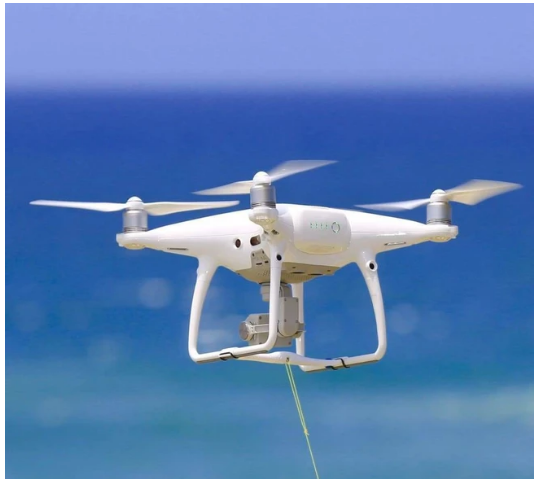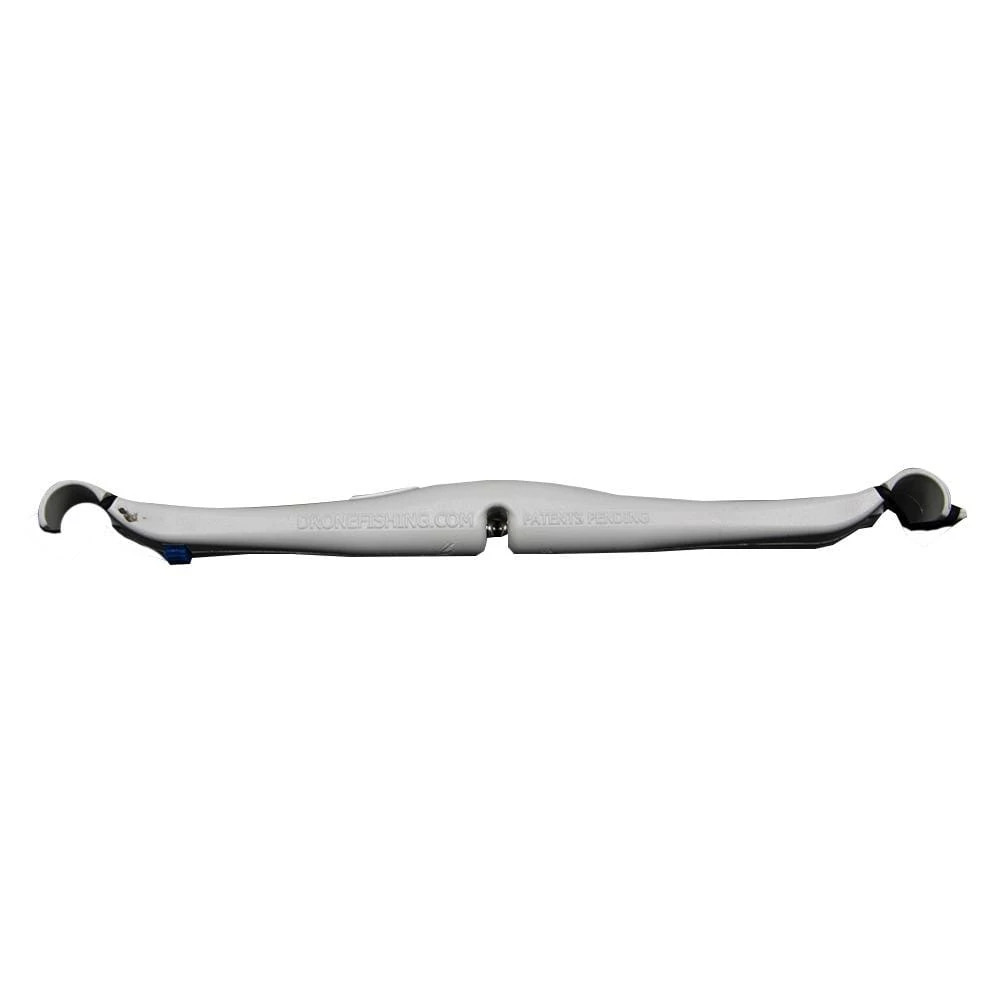Product Description
Gannet Sport Drone fishing bait release for DJI Phantom drones
Main features:
- A full automatic mechanical release series mainly used for fishing. As a full mechanical it does not require a battery or any electronics.
- Standard models fit all Phantom 2’s, 3’s & 4’s
- The lightest purpose-designed to release in the world at only 13g, 7x lighter than its closest rival.
- Designed not to interfere with your drones (Visual Positioning Sensors) VPS sensors in default optimal installation position. VPS remains ON, unobstructed and active so you are not risking your camera or drone by disabling it. See WARNINGS below for more,
- Mounts in seconds to your drone with no tools required,
- Clear from the drone camera including the large P4Pro & Adv camera,
- Over 4kg release ability (used on the Inspire 2 & custom drones)
- A Phantom can lift 1.4kg absolute Max, 800g Max recommended bait, more possible but not recommended. Easy setting from 50g-1,4kg when used on the Phantoms,
- Weight settings:
- On the Phantoms we recommend setting it to below 1kg for general everyday use,
- On the Mavic 1 to below 500g
- On the Mavic 2 to 800g
- once the experience has been gained you may increase the settings to the drone maximum should you wish to fly very big baits in windy conditions. As a rule, we recommend setting it to carry 300-400g for more than your largest bait of the day (this on medium-heavy tackle, on light-medium tackle 100-200g) This reduces unnecessary stress on the drone,
- Because of it’s high accuracy, (±5% @ 800g setting) the release setting can be made higher than any other release, closer to the drone limit, resulting in more hookups and less missed fish throwing the bait/lure as the hook was not set on the initial strike, this when trawling lures or bait direct to fish. Same goes for reducing stress on the drone when dropping normal baits no need to set it too high, saving your drone in the long run.
- No need to modify your drone in any manner it simply clips or straps on,
- Central loading the same as all other Gannets – balancing the load on all 4 motors, this is fundamental to all drones. You will never see a helicopter slinging a load off-center why do it to a drone?
- Central loading also distributes the load evenly to all 4 drone legs minimizing the stress on them as far as possible. See WARNINGS below for more details,
- Lowest possible release point on the drone without adding leg extensions – See WARNINGS below for more details,
- The entire release is installed below the radio antennas, which is in the drone legs, so it cannot interfere with signal or navigation at all, this becoming critical when at long range or in high interference areas.
- Is activated whenever the pull force on the release line, the Drop-Loop, exceeds the user setting, so if set to release at 1kg you can comfortably fly 600-700g loads all day long, the trailing line, wind on it and the bait, is typically less than 200g in most conditions, so if you manually stop the spool whilst still flying forward the drone easily exceeds the additional needed 100g – 200g releasing the load.
- Easy one hand loading while the drone is hovering for the Phantoms, the Mavics are too small and need landing to reload the next line.
- Designed for 0,3mm to 1,4mm Drop-Loops of either nylon or even metal,
- Instant release should the reel or line snag to above the settings threshold, same as it would if a bird was to hit the line,
- Smallest, most compact Gannet to date and the smallest release in the market by a very large margin. Weighing in at only 13g. Weight saved on the release is safety gained for the flight reducing drone power consumption when compared to competitive mechanical releases the power saving can be as great as 3min on every battery,
- High-quality injection-molded body design and appearance matching that of DJI themselves,
- So small it fits in any drone case with the drone. With no loose parts or tools so nothing can get lost or misplaced.
WARNINGS & CONCERNS REGARDING OTHER DESIGNS
- DO NOT disable VPS or Landing Protection, critical systems that protect your drone, camera & gimbal as well as personal and public safety. Other designs that require VPS to be disabled are compromised and should be avoided. Without it, the drone cannot perform precision landings. For more on VPS and flying over water please see https://youtu.be/FihnvkaN83M
- Some designs require yanking the line free due to the inability to set an accurate repeatable release force, the clamping yaws wherein the line is held simply can’t perform the same constantly under all conditions, sometimes the line start sliding to one end, sometimes it is pulled free from one side only and other times both ends of the line pull at once, sometimes the line or clamp can be wet and sometimes dry with salt, all this makes for very unpredictable performance especially under high loads, This forces the user to “over tighten” the release unnecessary for the loads that he uses, resulting in the need to yank on the drone giving impact loading to overcome the breakaway friction needed. The drone IMU does not handle repeated sudden movements well, nor is it good for the drone legs that house the radio antennas and compasses so best avoid designs of this nature, This if the intention is to at least at times fly heavier loads requiring heavier settings.
- Some designs claim that they cannot be over tightened, this is a fallacy as different line diameters and line conditions like being dry & salted will inevitably increase the release force requirement.
- Some designs force off-center loading, to any side, especially the back in order to clear the downwards VPS sensors, this reduces the load-carrying ability by up to 40% if central back and up to 60% if off-center to back, this dramatically increases drone instability, as individual motors Overspeed while countering the imbalance resulting in loss of control. These designs that require off-center loading are compromised and should be avoided as having one or two motors overwork and failover water is fatal. These designs make several claims to try to justify loading off-center, these claims are false and designed merely to justify a poor concept.
- There are designs that lift “near” the center but when they do they interfere with the VPS, these designs have options to clear the sensors but in those positions, they then lift the load totally wrong.
- Some designs have pivot points higher than the drone legs in order that the bulky release head can swing away when landing, this pivot point then effectively becomes the line anchor point on the drone which is then closer (higher) to the props than any Gannet, endangering the drone unnecessarily.
- Several designs weigh over 100g, any unnecessary weight added to the release is unnecessary power-sapping on the drone, also reducing the max bait load by the equivalent. Every 50g saps approximately 5% more power from the battery 100% of the time the drone is airborne. @ 100g heavier that goes up to 3min on every battery, So in 4 bait drops the drone has lost near 3min flight time just because of the heavy release. This can be the difference of making it back to shore or having the drone go for a swim.





















